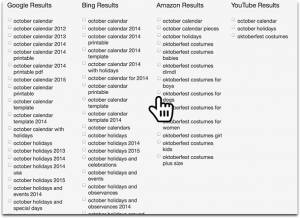While preparing for a course I’m going to deliver on managing change I’ve been diving (and in some cases drowning) into the latest thinking on influencing behavior and managing transformational change. I’ve now got a pretty good grasp on the topic. It’s really fascinating how the field of managing change and behavioral economics has evolved and is being used in ‘nudging’ people’s behavior in a direction that’s good for them.
Josh Bersin, one of my favorite thinkers at the moment, recently published an article on LinkedIn in which he identified and summarized a number of applications of behavioral economics on HR. He further explored how to influence people with its application.
- Loss Aversion: People feel twice as much pain losing something as they do gaining it.
- Status Quo Bias: People prefer to keep things the same rather than change them.
- Anchoring: People tend to “anchor” the value of something based on their first exposure to a number.
- Optimism Bias: People tend to overestimate the probability of positive events and underestimate the negative.
- Hindsight Bias: People believe what happened before will happen again, also called the “knew it all along.”
- Herd Behavior: People greatly prefer to do what other people are doing, rather than do what’s right for themselves.
- Reciprocity: When people receive a gift, they feel a need to respond to this action with a similar gift back.
- Choice Overload: When people have too many choices they give up, get unhappy, or get tired.
I‘m sure you recognize some of these behaviors and biases in yourself and others. But let me give you a couple of examples on how you can use this knowledge to influence your team’s behavior and nudge them in a direction that’s good.
Loss Aversion
When you ‘give’ people something be very sure you can do this on a sustainable basis. Once given (i.e. ability to use work hours flexibly, a bonus, opportunity to attend a conference, a favorite desk) it will be very hard to take it away, even if the circumstances require you to do so.
Take the example of the sales force who are often ‘rewarded’ or ‘motivated’ for having achieved great performances by taking them on foreign trips, conferences, etc. The drawback, however, of these incentive trips is that each subsequent year they have to be grander, longer and further away. The moment the team isn’t achieving its targets and isn’t being whisked away for its annual incentive trip negativity starts to creep in. And more often than not, the negative impact outweighs the positive of the previous years.
Herd Behavior
Recently I tried to test this out and had remarkable results. My consulting firm has recently launched its second ‘Women @ Work’ research study and we’ve invited 200 companies to participate. In the third and final follow-up email I designed 2 different subject lines. The first one states: “invitation to participate in the Women @ Work study 2016”, the alternative said: “Last Chance to Join 30 other Progressive HR Leaders in Sharing and Gaining Insight on Gender Diversity in Pakistan”.
Obviously the intention of the second one was to ‘tickle’ people to be part of an exclusive group of ‘progressive HR leaders’. The result was astounding; the second subject line generated 10 times more companies to accept our invitation. Wow, what a difference one sentence can make!
Choice Overload
The famous Jam Study found that consumers were 10 times more likely to purchase jam when the number of jams available on display was reduced from 24 to 6. Less choice, more sales. More choice, fewer sales. Interesting! Obviously, a variety of choices is attractive but as we all know it also requires more time from consumers. And that’s what many consumers are not willing to do.
Translating this to the workplace means that it’s better to restrict the number of pension schemes, training courses and even share option schemes. That means to ideally have 3 – 4 options to achieve a result. Anything more will just confuse them to a point where they’d rather not choose, even if a choice is beneficial to them.
Behavioral economics isn’t a new concept, however, its application to stimulate and influence behavior is a fast popularizing concept. When designing people strategies always ask yourself, ‘what behavior are you trying to encourage’. If the resultant behavior steers people in a direction that’s good for them, you know you’re on the right path. If you want to take the deep dive into our failings as Homo Economicus, do read Thaler and Sustein’s book Nudge: Improving Decisions About Health, Wealth and Happiness.
Business & Finance Articles on Business 2 Community(45)
Report Post






